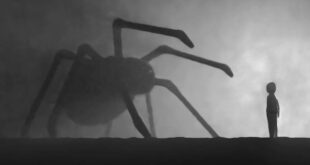There’s something special about everyday items that are all around us. When we are thirsty, we pick up a bottle of water to quench our thirst. Once we are done with it and the bottle is empty, we simply discard it or recycle. But, have you ever wondered how a plastic bottle looks before it takes its shape? Like that, we have found some interesting things and facts that have the capability to change the way you look at things. From emu eggs to plastic bottles, here are 10 things that can change your perspective.
1. A Japanese ¥1 coin is so light that it floats on the surface of water.

Japanese ¥1 coins are made from materials that mainly consist of aluminum and its alloys. The coins are actually more dense than water. However, because of the difference in density and surface tension, the coins will stay afloat. In some experiments, users used a paperclip to gently lower the coins into the water. Once the coin touched the surface of the liquid, it stayed afloat and did not sink until liquid dish-washing soap was added. Adding soap lowers the water’s surface tension so the drop becomes weaker and breaks apart sooner. Making water molecules stick together less is what helps soaps clean dishes and clothes more easily.
2. The world’s 26 richest people have the same wealth as the world’s poorest 50%.

It is a well known fact that everyday, the rich gets richer, while the poor are getting poorer. However, a recent report by Oxfam shows that the world’s 26 richest people own as much as the poorest 50%. The richest 26 have garnered enough wealth that they own as many assets as the 3.8 billion people who make up the poorest half of the planet’s population. Oxfam also reports that the wealth of more than 2,200 billionaires across the globe had increased by $900 billion in 2018 – or $2.5 billion a day. The significant increase in the accumulation of wealth was a reason for the number of billionaires owning as much wealth as half the world’s population to fall from 43 in 2017 to 26 in 2019. (source)
3. This is not an egg laid by an alien, but rather the egg of the emu bird.

After the ostrich, emus are the second-largest living birds in the world. They are capable of growing up to six and a half feet tall and can run up to speeds of about 30 miles (50 kilometers) per hour. Found primarily in Australia, but also in New Guinea, Indonesia, Solomon Islands, and the Philippines, they are highly territorial. The females lay large, emerald-green eggs and the males incubate the eggs for about seven weeks without leaving the nest to eat or drink. The female birds would then move on with their lives to find other partners, while the males stay with the eggs until they hatch. Once they hatch, the chicks stay with the dad for about four months, until they are able to eat on their own. According to Nat Geo, one emu egg is capable of feeding four to six adults. (source)
4. A 2 liter plastic bottle before and after expansion.

Like carbonated beverages, bottled water is a billion dollar industry. According to The Guardian, more than a million plastic bottles are bought around the world every minute and the number will jump another 20% by 2021. Most plastic bottles are made out of polyethylene terephthalate (PETE) and require a lot of steps to convert crude oil into usable plastic. After the plastic itself is made, it is shaped into whatever shape the company requires. In order to make things easier, plastic bottles are first made into a test-tube shape with threads for a cap; which is called the preform. The walls of the preform are thicker than the walls of a finished bottle, and it is done so for a reason.
Preforms are placed between two halves of another mold, and air is injected into it to expand. The preform is expanded like a balloon until it reaches the required shape of the mold. Once the mold is completed, the bottle is filled with water or whatever beverage the beverage company is selling. (source)
5. The FDA allows up to 60 aphids and/or thrips and/or mites per 100 grams of broccoli sold on the commercial market.

According to the FDA, it is ok to have an average of 60 or more aphids and/or thrips and/or mites per 100 grams of frozen broccoli. The FDA states that these so called “defects” are part of the normal process of growing and processing food, and that they present no health hazard as long as they remain below the “action levels” listed on their official website. Another interesting fact is that ground cinnamon can contain up to an average of 400 insect fragments per 50 grams. And ground marjoram can contain up to an average of 1,175 insect fragments per 10 grams. (source)
6. Pope Francis is an honorary Harlem Globetrotter.

The Globetrotters have not one, but two holy rollers on their honorary lineup. In 2015, Pope Francis was added to the list and he is one of only 10 high-profile people to receive the honor, including Nelson Mandela, Bob Hope, Henry Kissinger, Whoopi Goldberg, and fellow pope John Paul II. “His tireless work for the well-being of the poor and elderly, his humanitarian efforts, and his commitment to bridge gaps between people of various cultures are ways the Harlem Globetrotters also aspire to touch lives around the world,” Globetrotters CEO Kurt Schneider said. (source)
7. A traffic jam once lasted 12 days.

If you drive to work everyday, then you might consider your daily traffic routine to be stressful. In August 2010, Beijing saw a traffic jam that lasted an astounding 12 days and stretched 62 miles along the Beijing-Tibet expressway and China National Highway 110. The traffic jam not only managed to get a world record for being the longest in existence, but vendors installed mini stores and started selling food, water, and other necessities for the desperate drivers. The reason for the traffic was not because of accidents or construction work, but because there were too many cars on the road that day. (source)
8. Without empty space, the world’s atoms could fit into a grain of salt.

The world is filled with empty space. Everywhere you look, you can find space, not just between yourself and the outside world, but between and even within our atoms. As the BBC explains, “That means even the most solid-looking objects we see are predominantly nothingness. Put another way, if you were to remove all the empty space in the atoms that make up a human being, he or she would be a lot smaller than a grain of salt”. (source)
9. The bee hummingbird weighs less than a penny.

The bee hummingbird is the smallest known bird in the world. The tiny, brightly colored bird weighs less than a Canadian or US penny and because of this they are often referred to as “Penny Hummingbirds” or “Penny Birds”. Their light weight allows them to fly easier since they doesn’t have to build up a lot of momentum to get their tiny bodies off the ground. According to some experts, they can weigh an average of 2 grams, or less than a penny. (source)
10. Pool smell is due, not to chlorine, but to chloramines; chemical compounds that build up in pool water when it is improperly treated. Chloramines result from the combination of two ingredients: (a) chlorine disinfectants and (b) perspiration, oils and urine that enter pools on the bodies of swimmers.

People often describe public swimming pools using the smell of chlorine. While the smell brings happy thoughts to millions around the world, most people are not aware of the fact that the “pool smell” is due, not to chlorine, but because of chloramines. According to American Chemistry, “Chloramines result from the combination of two ingredients: (a) chlorine disinfectants and (b) perspiration, oils and urine that enter pools on the bodies of swimmers. Chlorine disinfectants are added to pool water to destroy germs that can give swimmers stomach aches, ear aches and athlete’s foot. Perspiration, oils and urine, however, are unwanted additions to pool water. By showering before entering the pool, and washing these substances from the skin, swimmers can help minimize pool smell”. (source)




